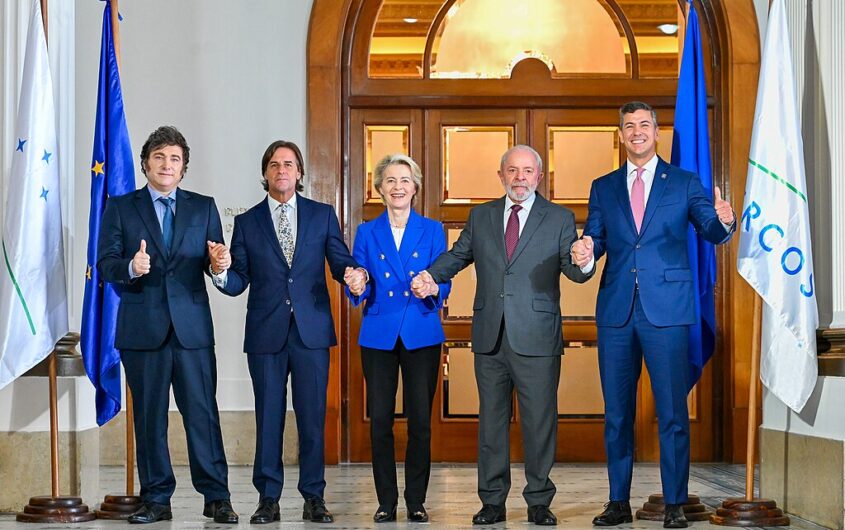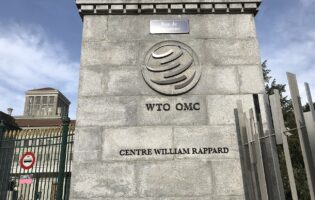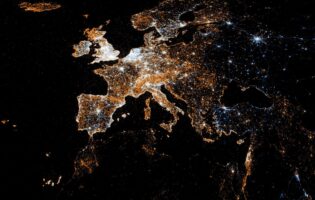
Dati Bendo - European Commission via Wikimedia Commons
A Southern TTIP?

Peter S. Rashish
Vice President; Director, Geoeconomics Program
Peter S. Rashish, who counts over 30 years of experience counseling corporations, think tanks, foundations, and international organizations on transatlantic trade and economic strategy, is Vice President and Director of the Geoeconomics Program at AICGS. He also writes The Wider Atlantic blog.
Mr. Rashish has served as Vice President for Europe and Eurasia at the U.S. Chamber of Commerce, where he spearheaded the Chamber’s advocacy ahead of the launch of the Transatlantic Trade and Investment Partnership. Previously, Mr. Rashish was a Senior Advisor for Europe at McLarty Associates, Executive Vice President of the European Institute, and a staff member and consultant at the International Energy Agency, the World Bank, UN Trade and Development, the Atlantic Council, the Bertelsmann Foundation, and the German Marshall Fund.
Mr. Rashish has testified before the House Financial Services Subcommittee on International Monetary Policy and Trade and the House Foreign Affairs Subcommittee on Europe and Eurasia and has advised three U.S. presidential campaigns. He has been a featured speaker at the Munich Security Conference, the Aspen Ideas Festival, and the European Forum Alpbach and is a member of the Board of Directors of the Jean Monnet Institute in Paris and a Senior Advisor to the European Policy Centre in Brussels. His commentaries have been published in The New York Times, the Financial Times, The Wall Street Journal, Foreign Policy, and The National Interest, and he has appeared on PBS, CNBC, CNN, NPR, and the BBC.
He earned a BA from Harvard College and an MPhil in international relations from Oxford University. He speaks French, German, Italian, and Spanish.
Just days after starting her second term as European Commission President, Ursula von der Leyen signed the EU-Mercosur Partnership Agreement on December 6 in Montevideo, Uruguay. This free trade deal between the European Union and the four countries of the Southern Common Market (Argentina, Brazil, Paraguay, and Uruguay) covers over 700 million people and 20 percent of the global economy and, if approved, would become the world’s largest such agreement to date.
Although von der Leyen wasted no time after taking office to put her signature to the agreement, getting to this point was anything but fast-paced. The talks began in 1999, but because of leadership changes in the EU and the South American countries involved, as well as evolving geoeconomic priorities, it has taken twenty-five years to find the right political constellation to move forward. With successive votes of no confidence in governments in France and Germany on the near horizon, the timing may also be explained by von der Leyen’s perception of a leadership vacuum that provided both the opportunity and the necessity to act to strengthen the EU’s global economic position ahead of a protectionist Trump administration 2.0.
EU-Mercosur is indeed a big deal. It would not only be larger than the EU’s existing Comprehensive Economic and Trade Agreement with Canada and its Economic Partnership Agreement with Japan; it would even dwarf the Comprehensive and Progressive Agreement for Trans-Pacific Partnership (CPTPP) that the first Trump administration withdrew from early in its term and that will include twelve countries now that the UK has joined.
While the EU-Mercosur deal has a smaller footprint than TTIP, it would also connect large markets on the two sides of the Atlantic in response to today’s even stronger challenge from China’s manufacturing overcapacity.
Such comparisons are useful. But to understand the EU-Mercosur agreement, the one that really counts is the ambitious Transatlantic Trade and Investment Partnership (TTIP) that the United States and the European Union launched in 2013. It faced a stalemate at the end of the Obama administration in 2016 and was not revived by the Trump administration when it came into office the following year.
Had TTIP been ratified, it would have been the first geoeconomic trade agreement, one whose high-standard rules encompassing 40 percent of world GDP would have provided the impetus to reform a global trading system that was already under stress owing to the weakness of the World Trade Organization and the rise of China’s mercantilism. While EU-Mercosur has a smaller footprint, like TTIP, it would also connect large markets on the two sides of the Atlantic in response to today’s even stronger challenge from China’s manufacturing overcapacity, as well as its dominance of critical minerals (where the Mercosur countries can move up the value chain to become key producers and exporters).
In the roughly ten years that separate TTIP and EU-Mercosur, the European Union has become much more aware of the need to protect its economic security, for example, to avoid asymmetrical dependencies that could be leveraged by adversaries for political ends. By diversifying the EU’s source of strategic imports, a deal with Mercosur would help with that objective.
But what has not changed is the opposition to the Mercosur deal by European agricultural interests who fear competition from low-cost Southern Cone producers. France, Poland, and Austria are against the accord for this reason. Italy—whose opposition would block the deal according to the EU’s voting rules—remains on the fence, although its manufacturers would benefit from lower tariffs on their exports to the Mercosur countries.
Free trade agreements have their limitations given the current geoeconomic challenges facing the transatlantic economies. Other offensive measures like investments in future technologies and secure and resilient supply chains, as well as defensive tools like inbound and outbound investment screening and export controls, may often be more effective. But used selectively, deals like EU-Mercosur need to remain a strategic option.








